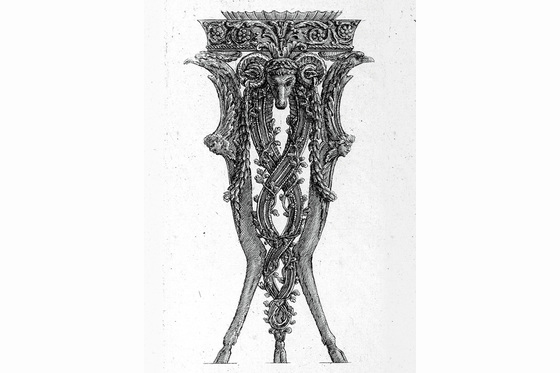
Hybrid Body Craft presents a design approach for bridging the cultural aspects of body crafts, which are existing cultural, historical, and fashion-driven practices and rituals associated with body decoration, with emerging on-skin interfaces. Yet, research in on-skin interfaces has focused on engineering aspects, with a scant focus on the cultural and social dimensions of device design. However, unlike all other media, the human body is a complex and meaning-laden surface that encompasses a wearer’s individual, social, and political identities.
#FACTUM ARTE PIRANESI SKIN#
Sensor device miniaturization and breakthroughs in novel materials have enabled technology to progress directly onto the skin surface. This knowledge-based jewelry modeler is developed using the Microsoft Visual Basic Programming environment in SolidWorks API.

By using knowledge base rules, geometrical models can be designed beyond a conventional design. Parametric modeling has great potential to develop customized CAD tools for automation in generating 3D models of handicraft products in a virtual environment. The traditional knowledge base of Filigree jewelry is incorporated in the CAD system's programming environment by defining some shape grammar rules and logical rules to control jewelry attributes. Traditional craftworks involve much skill, effort, and time, so upcoming generations are not interested in their respective traditional works. Indian traditional Filigree jewelry is delicate metal craftwork representing twisting or curling of pliable wire and shows the beauty of local craftsmen's traditional workmanship involved in making this type of decorative embellishments that result in a very precise and delicate model. Today, developments in CAD technologies are towards reducing the time and efforts of designers required in modeling.

The present work aims to develop a knowledge-based parametric CAD modeling system to create Indian traditional filigree jewelry designs. For more effective incorporation of technologies into craft practices, it is suggested that a new curriculum design customized for various types of craft makers be constructed and implemented. The participants envisioned that technologies would enhance productivity and creativity in their practice and that their digital craftspeople identity would thrive due to the rise of the maker culture. Additionally, the study found that technology has not advanced sufficiently to meet craftspeople’s expectations, and understanding of traditional craft skills is essential to take advantage of these technologies. The findings revealed that external variables, such as social influence and facilitating conditions, are as important as personal motivations for craftspeople’s acceptance of technology. This study’s methods consisted of two rounds of semi-structured interviews with 18 craft practitioners as well as participant observations during a short-term workshop in which they learned the basics of digital fabrication technologies.
#FACTUM ARTE PIRANESI PROFESSIONAL#
This study explores craft practitioners’ motivation to acquire new digital skills in the context of informal learning and professional development in Hong Kong and how they perceive potential changes in the maker culture and creative industries. Simultaneously, the public’s engagement in making through various means has escalated, disrupting the makers’ ecosystem. Produced by.- Fondazione Giorgio Cini and Factum Arte.Ĭurators.- Giuseppe Pavanello, director of the Istituto di Storia dell’Arte de la Fondazione Giorgio Cini Michele De Lucchi, director of the aMDL architecture studio (Milan) and Adam Lowe, director of Factum Arte.Since 2000, craft practitioners have increasingly adopted digital fabrication technologies. Place.- CaixaForum Madrid (Paseo del Prado, 36). Architect, Engraver, Antiquarian, Vedutista and Designer. Additionally, The Arts of Piranesi features Gabriele Basilico’s views of Roma and Paestum, in which the photographer pays personal tribute to the great master.
#FACTUM ARTE PIRANESI SERIES#
This it does through a series of contemporary interventions inspired by Piranesi’s work: a 3D video projection of the Carceri d’invenzione and eight original objects conceived by Piranesi and illustrated in his etchings, but never before manufactured.


It features more than 250 original etchings and focuses on the multi-disciplinary approach, style and extraordinary modernity of the Venetian artist. The show was conceived by Michele De Lucchi, produced by the Fondazione Giorgio Cini in association with Factum Arte and organised by ”la Caixa” Foundation.


 0 kommentar(er)
0 kommentar(er)
